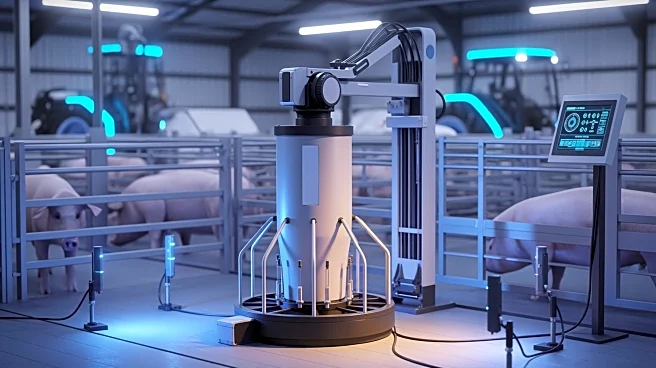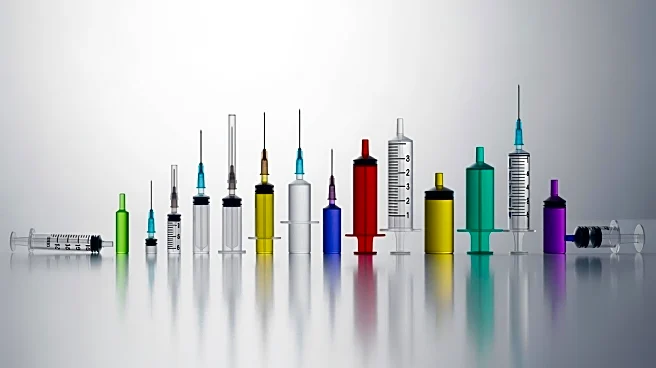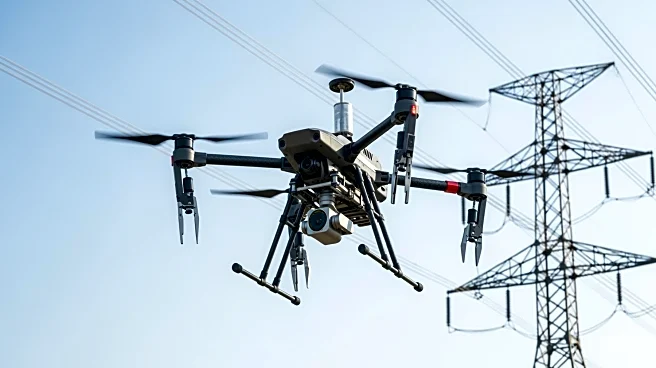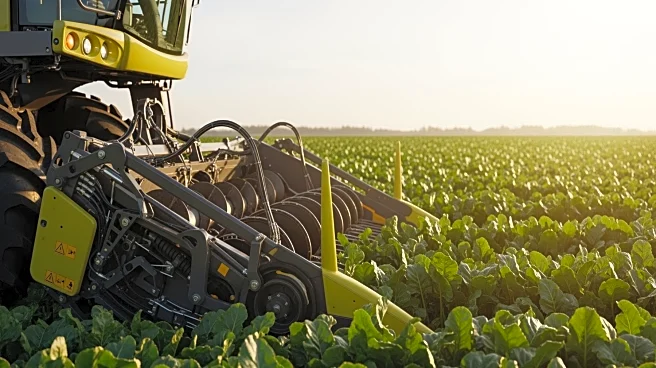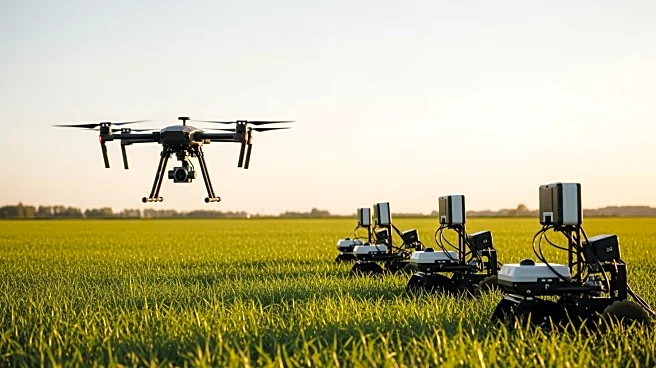What's Happening?
The precision swine farming market in North America, particularly in the U.S., is experiencing growth due to chronic labor shortages and the increasing adoption of robotics for tasks such as cleaning and feeding.
The USDA has revised its precision-agriculture framework to focus on data-ownership rules, encouraging producers to involve cloud vendors. This shift is part of a broader trend towards automation and the use of AI and IoT in farming, which aims to improve monitoring, welfare, and efficiency in swine farming. The market is projected to grow significantly, with a compound annual growth rate (CAGR) of 9.78% from 2025 to 2034.
Why It's Important?
The growth of precision swine farming in the U.S. is significant as it addresses labor shortages and enhances productivity through technology. This shift not only improves operational efficiency but also aligns with sustainability goals by optimizing resource usage and reducing environmental impact. The adoption of advanced technologies like AI and IoT in farming can lead to better animal welfare and more efficient farm management, potentially transforming the agricultural landscape. This development is crucial for traditional meat producers looking to maintain competitiveness and meet consumer demands for traceable and high-quality pork.
What's Next?
As the precision swine farming market continues to grow, stakeholders can expect further integration of digital technologies and increased regulatory support for sustainable practices. The focus will likely remain on enhancing automation and data analytics capabilities to improve farm management and animal welfare. Producers may also explore new investment opportunities in technologies that align with sustainability goals, potentially attracting more interest from investors and policymakers. The ongoing advancements in precision farming could lead to significant changes in the agricultural industry, with implications for labor practices, environmental policies, and market dynamics.
